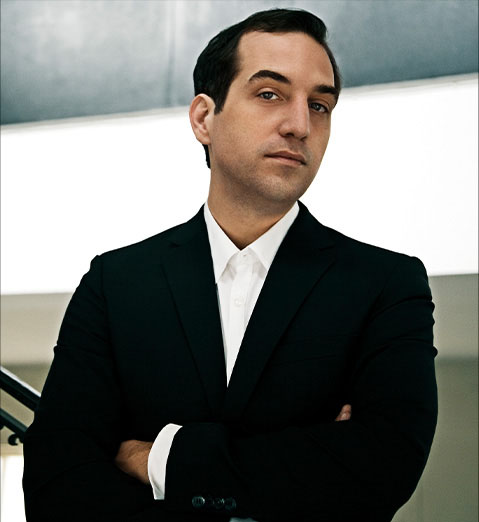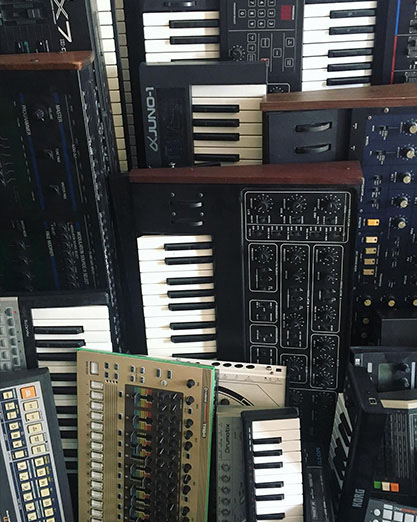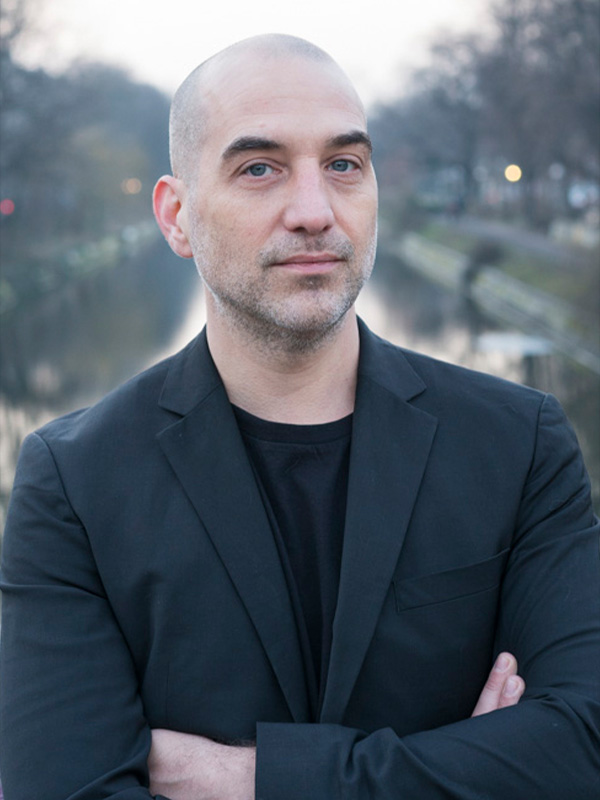Marc Houle
Electronic Dance Perfection
Marc Houle is the master of creating seminal records that helped circumscribe the minimal techno sound. His ever-evolving live shows continue to intrigue and excite, his studio is fully concentrated on sounds and emotion. We caught up with Marc to find out exactly what keeps him creating beats.
Getting in to electronic sounds



I grew up right next to Detroit in Windsor, Ontario. It’s like a 4 min drive to downtown Detroit where all the great parties were happening in the 90s. Almost every weekend we crossed over and went to all these cool warehouse places and danced and absorbed all the amazing sounds. Radio was also a great thing - there were booty stations along with great indie stations so I really got schooled on how a party sounds. It was basically our playground and we loved it.
I remember when my parents brought home an Atari Pong in the 70’s, the blips coming from the TV were so goddamn exciting. After that I graduated to a Commodore 64 which expanded the square wave love. I also remember loving Sesame Street when they used to play weird synth stuff paired with trippy visuals. It was like another dimension opening up in the middle of the regular world.
I got a Casio in the early 80s and used to play Philip Glass on it all the time. There was something about the repetition in his electronic stuff that triggered a spark in my head and I slowly graduated up from there.

The move to Berlin
Berlin is unlike any other city - there are just so many aspects to the techno scene going on. People do all sorts of crazy things all the time and you can draw inspiration and motivation from it. When you’re walking home from dinner and you see an artist in a storefront doing modular stuff at 11pm you know you’re in the right place.


Richie Hawtin’s Minus label
Growing up in the same city I think we were influenced by similar sounds. I was just a bedroom producer making mass amounts of music and through our mutual friend Magda, he heard some of it and thought it would fit on his new at the time Label. I was basically lucky.

Discovering Pigments
You know when I first opened Pigments up I was a bit confused - the layout isn’t like a normal softsynth. But then once I looked around I realized it’s actually really smart. I absolutely love how the modulations are all in a ribbon in the middle of the synth. It’s a smart idea and makes it much easier to visually grasp what’s really going on. It also makes it easier to combine modulations in a concrete way. That modulation ribbon is the spine of the whole synth so you’re always thinking how can I morph this sound and have it change over time. It changes the way you think of making a patch.
In techno, the focus is more on individual sounds and often it’s that simple sound that slowly changes throughout the track. I’m finding it much easier to build a sound that evolves over time which is what I wanted. It’s all about the sound.
I like that Pigments is very visual, so it’s great for the synth expert but also easy to use for someone without a degree in synthesis.
Otherwise you have to imagine the sound wave being modulated in your head but with this you can see what’s happening. On other synths, if you have an LFO going - you have to remember what it’s doing because it’s just a knob that’s not doing anything graphically. With this you always know what’s affecting the sound.
Marc Houle’s Signature
From Pigments to the dance floor...
Legendary dance music producer Marc Houle created 16 electrifying presets for Pigments. These sounds add the energy and beauty that's a signature of Houle's sound. Leads, smooth pads, presets with movement - add these to your own productions to experience the magic that Houle has created. Pigments is powerful, and Marc Houle's soundpack adds that extra spice to sprinkle over your dance production.
I was trying all aspects of the synth when I made it so it’s not like 20 basslines or something. It’s a bit of everything so you can not only get a sense of what the synth is capable of, but also all the sounds that I really love and incorporate.

Final words on Pigments
I think it’s a great step in a new direction that can really fill some holes and make sound editing really fun for the beginner through to the experts.
I’m excited to see where it goes in the future and will definitely use it a lot in productions.

